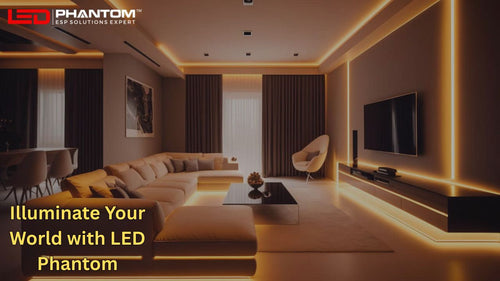How to Choose the Right Warehouse Lighting
When it comes to warehouse lighting, many business owners don't know where to start. There are so many different factors to consider, such as the size of your warehouse, the type of products you sell, and the level of brightness you need. In this blog post, we will discuss some things to keep in mind when choosing warehouse lighting. We will also provide tips on how to calculate the number of lights you need in your warehouse. Let's get started!
One of the most important factors to consider when choosing warehouse lighting is the coverage area of each light. You will need to determine how much space each light needs to cover in order to provide adequate illumination. This will depend on the size and layout of your warehouse, as well as the type of products you sell. For example, if you have a large warehouse with high ceilings, you will need lights that can cover a larger area. On the other hand, if you have a small warehouse with lower ceilings, you can get away with using fewer lights.
Another thing to keep in mind is how many lights you need in your warehouse. This will depend on the size of your warehouse and the level of brightness you need. To calculate this, you will need to determine the square footage of your warehouse and divide it by the coverage area of each light.
If you are still unsure about how to choose the right warehouse lighting, we recommend contacting a professional. They will be able to assess your specific needs and recommend the best solution for your business.
Warehouses exhibit unique characteristics. They have few windows, elevated shelving, high ceilings and large floor surfaces. These factors make the lighting of a warehouse very specific. The lighting should be designed to provide even light distribution on the floor and shelves while minimizing glare.
The first step in designing an effective warehouse lighting plan is to determine the type of activity that will take place in each area of the warehouse. There are three general types of activities: storage, order picking and assembly. Each activity has different lighting requirements.
Storage areas are usually high bay racks with wide aisles between the racks. The recommended light level for storage areas is 30 foot-candles (FC) at the floor surface. Order picking areas are also high bay racks but have narrow aisles between the racks. The recommended light level for these areas is 50 FC at the work surface. Assembly areas have lower ceilings
Proper warehouse lighting eliminates distractedness, fatigue and eye strain that employees face when working under harsh lighting conditions and with old outdated fixtures. It also enhances visibility in the workplace, prevents injuries and accidents and present your facility in a clean and professional manner.
There are different types of warehouse lighting fixtures available on the market that can be used to achieve these goals. The most common type of fixture is the high-bay light. These fixtures are designed to provide a large amount of light over a wide area. They are typically used in storage and assembly areas. Another common type of fixture is the low-bay light. These fixtures are designed to provide a smaller amount of light over a smaller area. They are typically used in order picking areas.
When choosing warehouse lighting fixtures, it is important to consider the following factors:
- The type of activity that will take place in each area
- The height of the ceilings
- The size of the room
- The amount of light needed
- The color of the light
- The beam angle
- The wattage
- The price
If you are still unsure about which fixtures to choose, we recommend contacting a professional. They will be able to assess your specific needs and recommend the best solution for your business. Thanks for reading! We hope this article was helpful.
Now that you know the basics of choosing warehouse lighting, it's time to start shopping around! There are a few things you should keep in mind when shopping for warehouse lights:
- Make sure you know the coverage area of each light. You don't want to end up with too few or too many lights.
- Consider the type of light. You may want a brighter light for storage areas and a softer light for order picking areas.
-Think about the wattage. You don't want to use more energy than necessary, but you also don't want your lights to be too dim.
- Price is always a consideration, but it shouldn't be the only factor you consider. Make sure you are getting a good quality product for your money.
If you keep these things in mind, you should be able to find the perfect warehouse lights for your needs! Thanks for reading and happy shopping!
Warehouses are unique spaces that require specialized lighting solutions. By taking into account the type of activity that will take place


